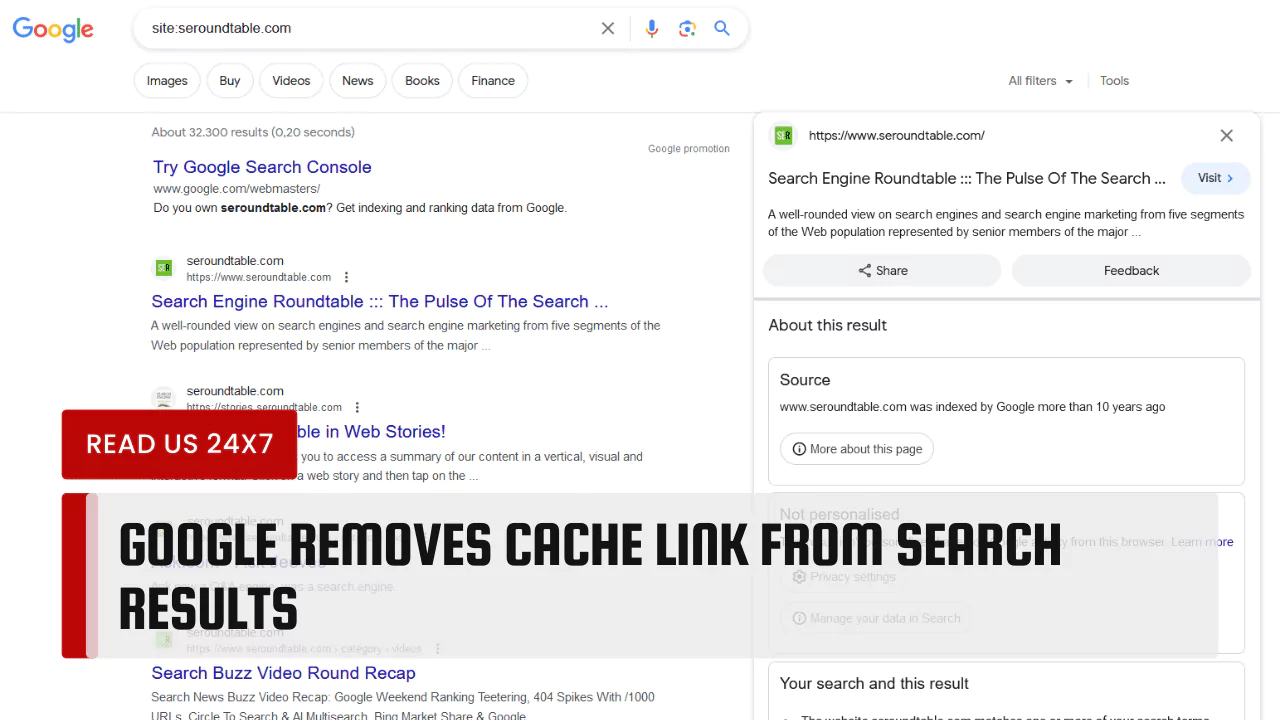Google has recently removed the cache link from its search results, which allowed users to view a snapshot of a web page as it appeared when Google last crawled it. This change has implications for SEO professionals and reporters who rely on the cache link for various purposes. In this article, we will explore why Google decided to retire the cache link and what alternatives are available for users who need to access cached web pages.
Google Search Removes Cached Links
The cached link was a feature that Google introduced in 1999, which enabled users to see a version of a web page that was stored on Google’s servers. This was useful for users who wanted to see how a web page looked in the past, or who encountered a broken or slow-loading web page. The cached link also provided information about when Google last crawled the web page and what keywords it used to index it.
However, on 2nd February, 2024, Google’s Search Liaison, Danny Sullivan, confirmed on Twitter that Google had removed the cache link from its search results. He said that this was done to “simplify the search interface” and that the cache link was “rarely used” by users. He also added that users can still access the cached web pages by using the site: operator in the search box, or by using the Wayback Machine, a third-party service that archives web pages over time.
The removal of the cache link has caused some concern among SEO professionals and reporters who used the cache link for various reasons. For example, SEO professionals used the cache link to check how Google indexed and ranked their web pages and to identify any issues or errors that might affect their SEO performance. Reporters used the cache link to verify the authenticity and timeliness of web pages and to access web pages that were deleted or modified by their owners.
Reasons for Retiring Cached Links
Google has not provided an official explanation for why it decided to retire the cache link, but some possible reasons are:
Improved Internet Reliability
Google may have assumed that the cache link was no longer necessary, as the internet has become more reliable and fast over the years, and users can access most web pages without any problems. Google may have also improved its crawling and indexing processes, which reduced the need for users to see the cached versions of web pages.
Availability of Alternative Tools
The availability of alternative tools for monitoring and accessing historical web content has rendered the cache link less indispensable. Services such as the Wayback Machine offer comprehensive archives of web pages, allowing users to view past iterations and track changes over time. Google’s potential collaboration with the Wayback Machine underscores the company’s commitment to providing users with access to historical web data in alternative formats.



